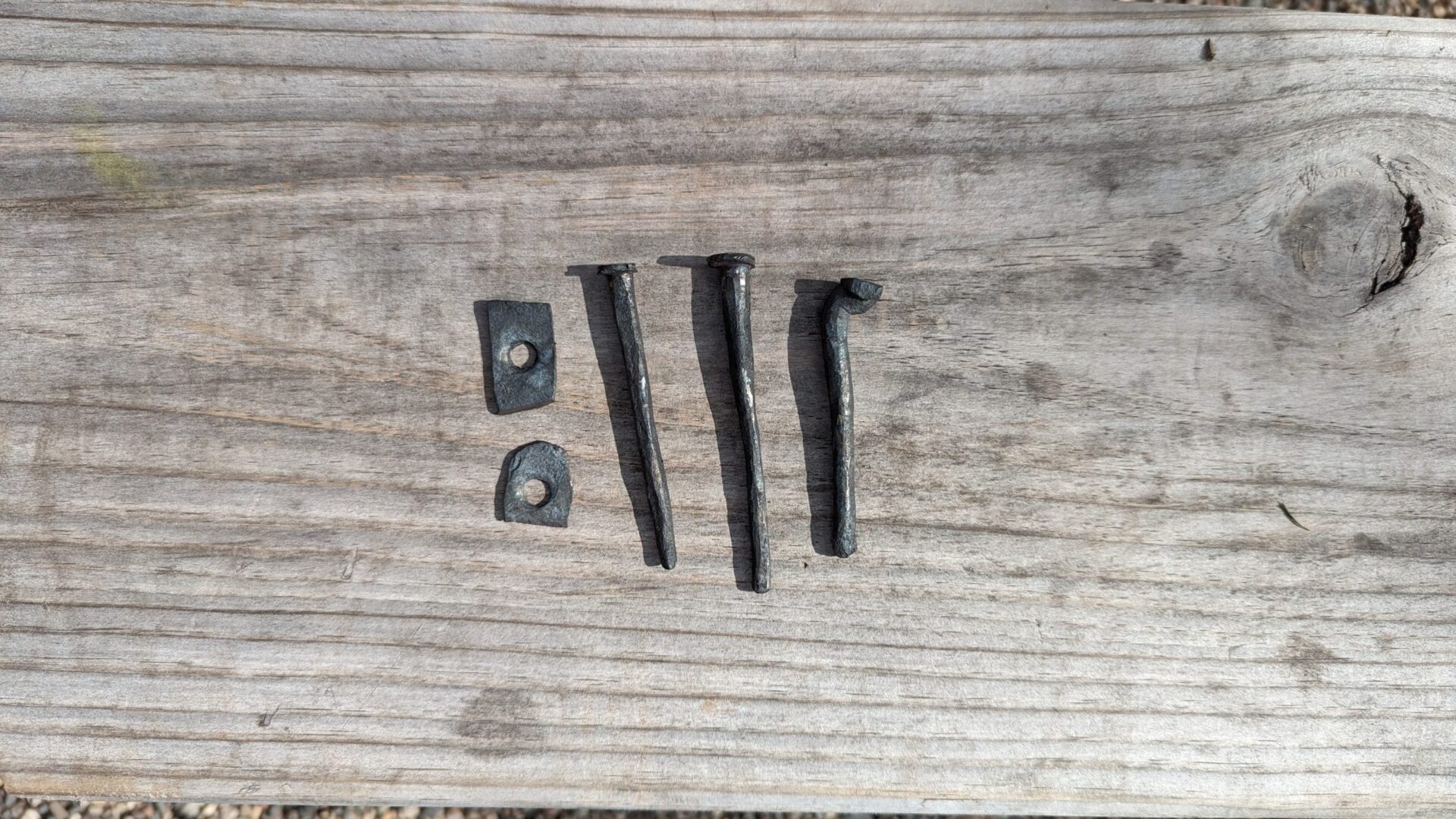This week, our data was definitely more qualitative than quantitative, as we experimented with forging nails and roves from mild steel and/or wrought iron. There was a lot of experimentation and trial and error involved in this process, but I was still able to gather some information on useful information on temperature, time, and the dimensions of the finished products. With the help of Professor Sarah Kennedy and her pXRF machine that we used in class the next day, we were all also able to gather some information on the chemical compositions of nails, but also several other objects that had been used in previous labs.
We began the lab by putting stone coal in our forge (refilling as needed) and lighting a fire, with someone continually cranking oxygen to keep the fire going. After letting the fire burn for about 5 minutes to smoke out some of the impurities in the coal, we began to craft our nails by putting a rod of mild steel in the fire for as long as it took to heat up and start glowing orange or yellow. It generally took about a minute and a half to two minutes to reach this temperature. Instead of taking direct temperature readings or timing every time we heated the metal to determine when it was time to take the rod out of the fire, we relied on the color of the steel to know when it was hot enough to work with. We found that an appropriate temperature was around 900 degrees Fahrenheit. For making nails, this was a glowing orange color, and for the roves, the optimal color was more yellow, corresponding with an even higher heat. Determining this was a bit tricky, particularly when we tried to create a rove with wrought iron, which was harder to control and much easier to overheat. Particularly with the wrought iron, but with the steel too, there was a fine line between heating the metal up so that it was hot enough to hammer without cooling down too quickly, but not so hot that pieces of the metal would melt or break off. While making our roves, we started with wrought iron, struggled to control its temperature, and then switched back to the mild steel we had used for the nails. While the steel was hot, we hammered it into a square shape, then an approximately octagonal shape, and then a round shape that was 5/16″ around, by hammering out “shoulders” into the metal rod and rotating it back and forth 90 degrees. Then, we cut off the nail from the rest of the steel, put it through the hole in the anvil, and hammering a flat (ish) head.
| Temperature that burns steel | Optimal temperature for working with the steel | Temperature after a bit of forging (between each heat) |
| 2400 degrees F | 900 degrees F | 800 degrees F |
We were able to create three nails that were 3 inches long and 5/16 of an inch around, and two roves that were each about one inch long, over the course of 2.5 hours in lab (we spent one hour for set up and demonstration and about half an hour for cleaning up, so two and a half hours in the middle were actually spent forging), which is a lot slower than professional blacksmiths. We all took many “heats” to create our nails. Max began his nail at 2:03 pm and finished just after 2:30 pm. I went next, beginning at 2:35 pm and finishing about an hour later, which was much slower, but included the time I spent taking a break from my nail to watch Martin’s rove demonstration. I had an especially difficult time making the head of my nail, so I had to reheat it many times to fix imperfections. Jack was the quickest, starting his nail at 3:40 pm and finishing at 4:04 pm. We used the last half hour or so of lab to make our roves, starting at 4:05 pm and finishing at 4:35 pm, which we made simultaneously from the mild steel, by hammering flat about two inches of the rod and punching two holes. Making the roves was simpler, required fewer heats, and overall went a lot quicker.
The next day in class, Prof. Sarah Kennedy used the archaeology department’s pXRF machine and analyzed a metal knife forged by last year’s class, the copper brooch from our cremation lab, and an iron nail made by Martin. Depicted below are the chemical compositions of these items.





0 thoughts on “Group A Week 7 Lab Data : Blacksmithing”